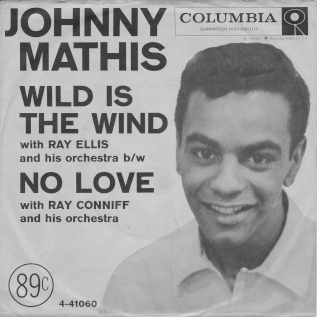Related Research Articles

Timothy Walter Burton is an American director, producer, writer, animator, and illustrator. Known for pioneering goth culture in the American film industry, Burton is famous for his gothic horror and fantasy films. He has received numerous accolades including an Emmy Award, and a Golden Globe Award as well as nominations for two Academy Awards and three BAFTA Awards. He was honored with the Venice International Film Festival's Golden Lion for Lifetime Achievement in 2007 and was given the Order of the Arts and Letters by Culture Minister of France in 2010.

Walter Elias Disney was an American animator, film producer, voice actor, and entrepreneur. A pioneer of the American animation industry, he introduced several developments in the production of cartoons. As a film producer, he holds the record for most Academy Awards earned (22) and nominations (59) by an individual. He was presented with two Golden Globe Special Achievement Awards and an Emmy Award, among other honors. Several of his films are included in the National Film Registry by the Library of Congress and have also been named as some of the greatest films ever by the American Film Institute.

The golden age of American animation was a period in the history of U.S. animation that began with the popularization of sound synchronized cartoons in 1928 and gradually ended in the 1960s when theatrical animated shorts started to lose popularity to the newer medium of television. Animated media from after the golden age, especially on television, were produced on cheaper budgets and with more limited techniques between the late 1950s and 1980s.

Walt Disney Pictures is an American film production company and subsidiary of Walt Disney Studios, a division of Disney Entertainment, which is owned by The Walt Disney Company. The studio is the flagship producer of live-action feature films within the Walt Disney Studios unit, and is based at the Walt Disney Studios in Burbank, California. Animated films produced by Walt Disney Animation Studios and Pixar Animation Studios are also released under the studio banner. Walt Disney Studios Motion Pictures distributes and markets the films produced by Walt Disney Pictures.
John Frederick Hannah was an American animator, writer and director of animated shorts.
The history of animation, which is the method for creating moving pictures, has an early history and modern history, beginning in 1888 with the advent of celluloid film. The main focus of this article the history of animation post-1888.

Robert Cletus Driscoll was an American actor who performed on film and television from 1943 to 1960. He starred in some of the Walt Disney Studios' best-known live-action pictures of that period: Song of the South (1946), So Dear to My Heart (1949), and Treasure Island (1950), as well as RKO's The Window (1949). He served as the animation model and provided the voice for the title role in Peter Pan (1953). He received an Academy Juvenile Award for outstanding performances in So Dear to My Heart and The Window.

Walt Disney Animation Studios (WDAS), sometimes shortened to Disney Animation, is an American animation studio that creates animated features and short films for The Walt Disney Company. The studio's current production logo features a scene from its first synchronized sound cartoon, Steamboat Willie (1928). Founded on October 16, 1923, by brothers Walt Disney and Roy O. Disney after the closure of Laugh-O-Gram Studio, it is the longest-running animation studio in the world. It is currently organized as a division of Walt Disney Studios and is headquartered at the Roy E. Disney Animation Building at the Walt Disney Studios lot in Burbank, California. Since its foundation, the studio has produced 62 feature films, from Snow White and the Seven Dwarfs (1937) to Wish (2023), and hundreds of short films.

The Fox and the Hound is a 1981 American animated buddy drama film produced by Walt Disney Productions and loosely based on the 1967 novel of the same name by Daniel P. Mannix. It tells the story of the unlikely friendship between a red fox named Tod and a hound named Copper, as they struggle against their emerging instincts and the realization that they are meant to be adversaries.

"Wild Is the Wind" is a song written by Dimitri Tiomkin and Ned Washington for the 1957 film Wild Is the Wind. Johnny Mathis recorded the song for the film and released it as a single in November 1957. Mathis' version reached No. 22 on the Billboard chart. It was nominated for an Academy Award for Best Song in 1958, but lost to "All the Way" by Jimmy Van Heusen and Sammy Cahn from The Joker is Wild.
John Ryan Kinney was an American animator, director and producer of animated shorts. Kinney is the older brother of fellow Disney animator Dick Kinney.

Christopher James Buck is an American film director, animator, and screenwriter known for co-directing Tarzan (1999), Surf's Up (2007), Frozen (2013), which won the Oscar for Best Animated Feature in 2014, Frozen II (2019), and Wish (2023). He also worked as a supervising animator and story artist on Pocahontas (1995) and Home on the Range (2004).

Johnny Tremain is a 1957 American adventure drama film made by Walt Disney Productions, released by Buena Vista Distribution, and based on the 1944 Newbery Medal-winning children's novel of the same name by Esther Forbes, retelling the story of the years in Boston, Massachusetts prior to the outbreak of the American Revolution. Johnny Tremain was the first Disney live-action film to be directed by Robert Stevenson. It was made for television but was first released in theatres. Walt Disney understood the new technology of color television and filmed his Walt Disney anthology television series in color, but the show, known as Disneyland at that time, was broadcast in black and white. After its theater run in 1957, the film was shown in its entirety on television in two episodes, rather than as a complete film on a single evening, on November 21 and December 5, 1958.

The Metro-Goldwyn-Mayer cartoon studio was an American animation studio operated by Metro-Goldwyn-Mayer (MGM) during the Golden Age of American animation. Active from 1937 until 1957, the studio was responsible for producing animated shorts to accompany MGM feature films in Loew's Theaters, which included popular cartoon characters Tom, Jerry, Droopy, Butch, Spike, Tyke, and Barney Bear.
City of Gold is a 1957 Canadian documentary film by Colin Low and Wolf Koenig, chronicling Dawson City during the Klondike Gold Rush. It made innovative use of archival photos and camera movements to animate still images, while also combining narration and music to bring drama to the whole. Its innovative use of still photography in this manner has been cited by Ken Burns as the source of inspiration for his so-called Ken Burns effect, a type of panning and zooming effect used in video production to animate still images.

Grand Canyon is a 1958 American short documentary film directed by James Algar and produced by Walt Disney Productions. The film producer was Ernst Heiniger, assisted by his wife Jeanne. It was shown as a supplement during Sleeping Beauty's initial run. The short won an Oscar at the 31st Academy Awards in 1959 for Best Short Subject. It is also included as a bonus feature on the 1997 laserdisc, 2003 DVD, and 2008 DVD & Blu-ray releases of Sleeping Beauty.

The Disney Renaissance was a period from 1989 to 1999 during which Walt Disney Feature Animation returned to producing critically and commercially successful animated films. The ten feature films associated with this period are The Little Mermaid (1989), The Rescuers Down Under (1990), Beauty and the Beast (1991), Aladdin (1992), The Lion King (1994), Pocahontas (1995), The Hunchback of Notre Dame (1996), Hercules (1997), Mulan (1998), and Tarzan (1999).

Lawrence Muzzy Lansburgh was an American producer, director, and screenwriter known for his films featuring animals.
Janet Lansburgh was an American screenwriter and director known for her work on Walt Disney productions of the 1950s and 1960s. She often worked with her husband, Larry Lansburgh.
References
- ↑ "New York Times: The Wetback Hound". Movies & TV Dept. The New York Times . 2011. Archived from the original on May 20, 2011. Retrieved May 21, 2008.
- ↑ "The 30th Academy Awards (1958) Nominees and Winners". oscars.org. October 4, 2014. Retrieved May 23, 2019.